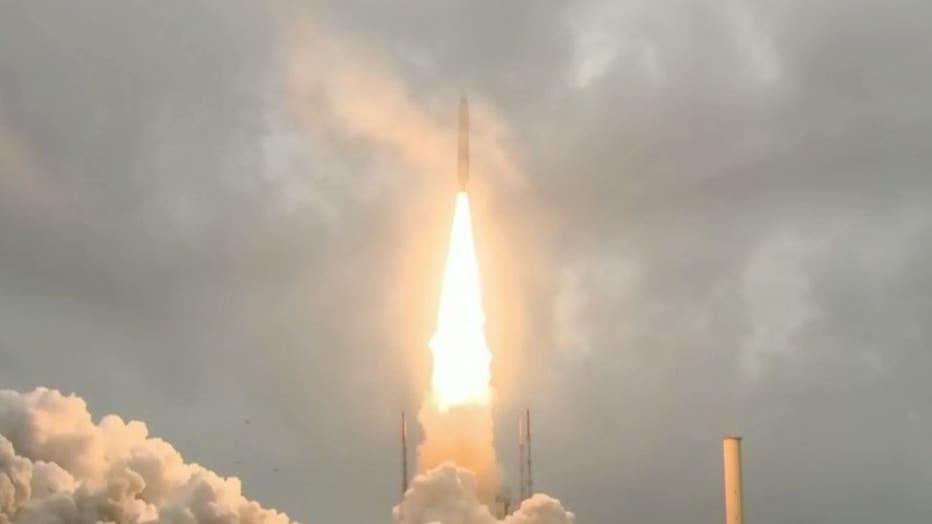NASA launches James Webb Space Telescope on Christmas Day
NASA’s James Webb Space Telescope, the world’s largest and most powerful, rocketed away from South America into the sky Christmas morning.
An Ariane 5 rocket lifted off from Europe’s Spaceport in Kourou, French Guiana carrying NASA’s next-generation space observatory.
"#NASAWebb is now on its way to its new home a million miles from Earth, where it will #UnfoldTheUniverse in ways we’ve never seen before," NASA tweeted following the launch.
It will be the biggest and most powerful astronomical observatory ever to leave the planet, elaborate in its design and ambitious in its scope. At a budget-busting $10 billion, it is the most expensive and also the trickiest, by far, to pull off.
The James Webb Space Telescope will seek out the faint, twinkling light from the first stars and galaxies, providing a glimpse into cosmic creation. Its infrared eyes will also stare down black holes and hunt for alien worlds, scouring the atmospheres of planets for water and other possible hints of life.

"That’s why it’s worth taking risks. That’s why it’s worth the agony and the sleepless nights," NASA's science mission chief Thomas Zurbuchen said in an interview with The Associated Press.
NASA Administrator Bill Nelson said he's more nervous now than when he launched on space shuttle Columbia in 1986.
"There are over 300 things, any one of which goes wrong, it is not a good day," Nelson told the AP. "So the whole thing has got to work perfectly."
The Webb telescope is so big that it had to be folded origami-style to fit into the nose cone of the European Ariane rocket for liftoff from the coast of French Guiana in South America. Its light-collecting mirror is the size of several parking spots and its sunshade the size of a tennis court. Everything needs to be unfolded once the spacecraft is speeding toward its perch 1 million miles (1.6 million kilometers) away.
"We’ve been waiting a long time for this," said the Massachusetts Institute of Technology's planet hunter Sara Seager. "Webb will move our search for life forward, but to find signs of life we have to be incredibly lucky."
Named after the man who led NASA during the space-trailblazing 1960s, the 7-ton James Webb Space Telescope is 100 times more powerful than Hubble.
The 31-year-old Hubble — increasingly creaky but still churning out celestial glamour shots — focuses on visible and ultraviolet light, with just a smattering of infrared light.
As an infrared or heat-sensing telescope, Webb will see things Hubble can’t, providing "an entirely new perspective on the universe that will be just as awe-inspiring," said Nikole Lewis, deputy director of Cornell University’s Carl Sagan Institute.
Webb will attempt to look back in time 13.7 billion years, a mere 100 million years after the universe-forming Big Bang as the original stars were taking shape. Scientists are eager to see how closely, if at all, these initial galaxies resemble our modern day Milky Way.
To out hustle Hubble, Webb requires a considerably bigger mirror spanning 21 feet (6.5 meters). It also needs a canopy large enough to keep sunshine and even reflections from the Earth and moon off the mirror and science instruments. The shiny, five-layered thin shade stretches 70 feet by 46 feet (21 meters by 14 meters), essential for keeping all four instruments in a constant subzero state — around minus 400 degrees Fahrenheit (minus 240 degrees Celsius).
The most daunting part of the mission: Unfolding Webb’s mirror and sunshield following launch, and locking them into perfect position. The gold-plated mirror consists of 18 motor-driven segments, each of which must be meticulously aligned so they can focus as one.
NASA has never attempted such a complicated series of steps remotely. Many of the mechanisms have no backup, so the failure of any of 344 such parts could doom the mission.
Watch FOX 35 News for the latest Central Florida stories.

